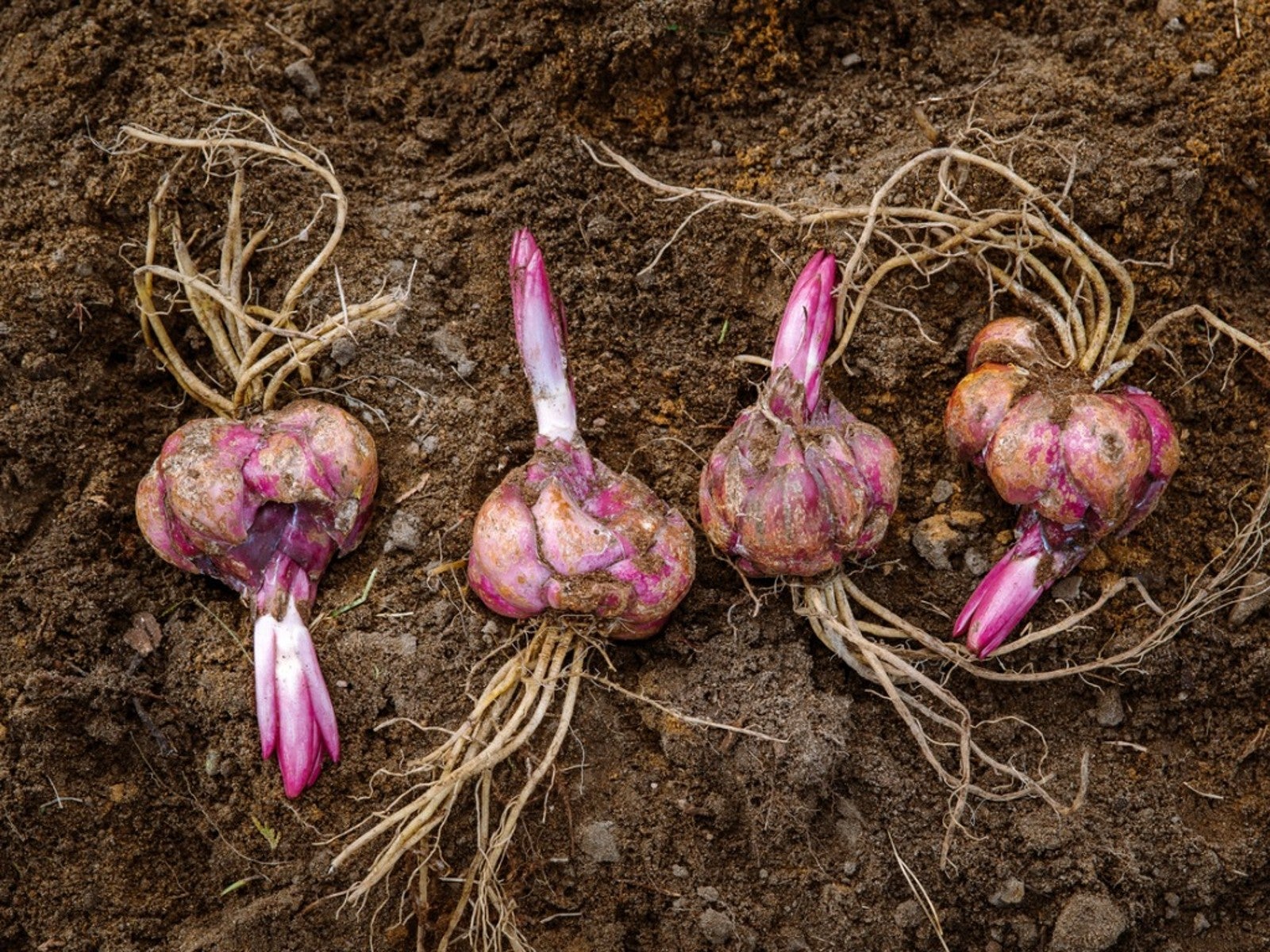When To Dig Up Bulbs That Bloom In Summer


Planting summer blooming flower bulbs is an easy way to add effortless beauty to beds, borders, and containers. Beyond planting, most summer species require little attention or special care from growers. Though some types may behave as perennials, many may not be hardy in all growing zones. It is for this reason that some growers will need to follow proper digging and storage procedures after blooms have faded in the fall. Below we will explore after care procedures for some of the most common types of ornamental summer bulbs.
When to Dig Up Dahlia Bulbs
Dahlias are technically grown from tubers. These tubers quickly grow to produce large plants each season. For those living outside of the dahlia plant’s hardiness zone, knowing when to lift and store the tubers is key in saving them for next season. Most experts suggest allowing the plants to die back naturally with the arrival of the first frost. Once plants have turned brown, gardeners often allow one to two weeks to pass before digging the tubers. This allows for the formation of “eyes” on each tuber, from which the next season’s growth will emerge. After digging, allow the tubers to dry for a few days before placing them into storage in a cool, dark place. Tubers should be packed in a storage medium that regulates moisture well, such as wood shavings or vermiculite. Tubers should be neither too wet nor too dry.
When to Dig Up Canna Bulbs
Like dahlias, gardeners should wait until the foliage of canna plants has been killed by the first frost. Carefully remove the dead plant matter from the canna by snipping it to ground level. Next, a shovel can be used to carefully lift the bulbs from the soil. As canna plants are technically grown from rhizomes, growers may find the removal of large clumps to be easiest. Each of these clumps can then be separated and rinsed free of soil before storage. Once dry, canna rhizomes should be stored in a cool, dark place that is free of frost.
When to Dig Up Gladiolus Bulbs
Grown from corms, gladiolus can be dug from the garden with the arrival of the first frost in fall. During this time the foliage will naturally begin to die back. Like other summer blooming perennials, gladiolus should be allowed to dry before being moved into storage. Though it is not required, many gardeners find the application of ornamental fungicides and other treatments to be beneficial at this time to prevent the overwintering of various diseases and pests.
When to Dig Up Lily Bulbs
Though lily bulbs are often hardy in the garden, they can be dug for several reasons. This includes for propagation or simply to relocate them to a new site. Like other summer flowering bulbs, ornamental gardeners should wait until the arrival of the first frost. Allowing foliage to die back naturally is imperative in maintaining plant health and vigor in seasons to come. After digging plants, wash each bulb carefully, checking for signs of damage or rot. Once allowed to dry, bulbs can be stored in a cool, dark place for the duration of winter.
When Should I Dig Up Elephant Ear Bulbs?
Technically grown from tubers, elephant ear bulbs should be removed from the garden after the arrival of the first frost in fall. At this time growers will need to carefully dig around each plant, making certain not to harm or damage the tuber. Once cleaned of soil, each tuber will benefit from being allowed to dry in a warm place. Most gardeners suggest wrapping the tubers in paper before moving them to a cool, dark place.
Sign up for the Gardening Know How newsletter today and receive a free copy of our e-book "How to Grow Delicious Tomatoes".

Tonya Barnett has been gardening for 13 years. Flowers are her passion. She has transformed her backyard into a cut flower garden, which she regularly chronicles on her YouTube channel http://www.youtube.com/@tonyawiththeflowers.